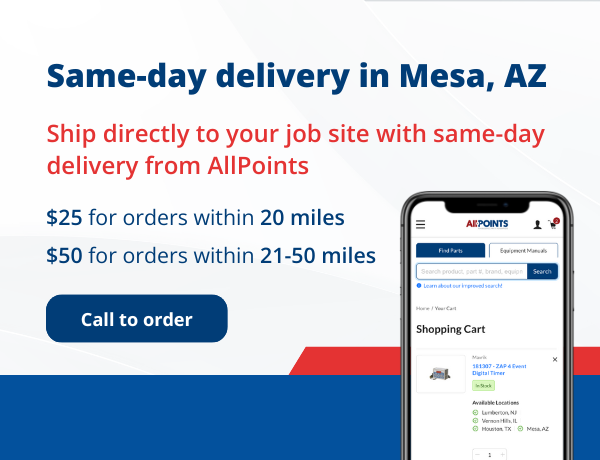The Essential Guide to Sanitization: Protecting Health, Equipment, and Businesses
Nov 21st 2024

According to the CDC, foodborne illnesses affect approximately 48 million Americans annually, with restaurant violations playing a significant role in these statistics. For service technicians, this isn't just another number — it's a call to action. Proper sanitization isn't merely about meeting health department requirements; it's about protecting customer health, extending equipment life, and safeguarding your reputation and bottom line.
Foodborne illness is a serious issue, and service technicians can be caught in the crosshairs of a restaurant looking to blame someone else. In today’s post-pandemic environment, with heightened awareness of hygiene and sanitization, your approach to sanitization can make the difference between a thriving establishment and one that faces equipment failures, health violations, or worse.
Building Your Sanitization Arsenal
Essential Chemical Agents
Every technician needs a well-stocked toolkit of cleaning and sanitizing agents. However, not all sanitizers are created equal, and using the wrong product can damage equipment or create health hazards.
Commercial-Grade Sanitizers:
- Quaternary Ammonium Compounds (Quats): Ideal for food contact surfaces, these sanitizers are effective against a broad spectrum of bacteria while being gentle on surfaces. Use them on prep tables, cutting boards, and equipment exteriors.
- Chlorine-Based Solutions: Perfect for heavy-duty cleaning and removing stubborn stains. These are particularly effective for sanitizing drains and non-food contact surfaces.
- Alcohol-Based Sanitizers: Essential for electronic components and control panels where water-based solutions could cause damage.
Specialized Cleaners:
- Degreasers: Critical for maintaining fryers, grills, and ovens
- Scale Removers: Essential for ice machines, dishwashers, and coffee equipment
- Food-Safe Lubricants: Necessary for maintaining moving parts while ensuring food safety
Professional Tools and Equipment
Your cleaning arsenal should include:
- Heavy-duty scrub brushes with various bristle types for different surfaces
- Microfiber cloths (color-coded for different areas to prevent cross-contamination)
- Professional-grade scrapers and putty knives
- Pressure washers for deep cleaning
- Ultrasonic cleaners for small parts and components
PPE: Your First Line of Defense
Never compromise on personal protective equipment:
- Chemical-resistant gloves rated for your cleaning agents
- Safety goggles to protect against splashes
- Respiratory protection when working with strong chemicals
- Waterproof aprons to protect clothing and skin
Strategic Sanitization Protocols
Preventive Maintenance Program
Implement a structured cleaning schedule:
Daily Checklist:
- Morning equipment inspection before kitchen operations
- Between-service wipe-downs of high-touch areas
- End-of-day deep clean of all serviced equipment
Weekly Deep Clean Protocol:
- Complete dismantling of serviceable equipment
- Inspection and cleaning of ventilation components
- Thorough cleaning of drainage systems
- Documentation of all maintenance activities
Critical Control Points
Focus your attention on these high-risk areas:
Equipment Hotspots:
- Gaskets and seals
- Equipment joints and seams
- Drainage channels
- Air intake vents
- Control panels and switches
Customer Contact Zones:
- Service counter surfaces
- Display case components
- Self-service equipment
- Payment terminals
Advanced Sanitization Techniques
Cross-Contamination Prevention
Implement these proven strategies:
Color-Coding System:
- Red: High-risk areas (raw meat equipment)
- Green: Produce preparation areas
- Blue: General food contact surfaces
- Yellow: Chemical storage and cleaning equipment
Zone Management:
- Work from clean to dirty areas
- Use separate tools for different zones
- Document cross-contamination prevention procedures
Emergency Response Procedures
Be prepared for sanitization emergencies:
- Immediate containment of spills or contamination
- Proper disposal of contaminated materials
- Thorough sanitization of affected areas
- Documentation and reporting
- Follow-up inspection and testing
Proper sanitization is about professionalism. It's a critical component of food safety, equipment longevity, and business success. As a service technician, your role in maintaining these standards is invaluable. Stay informed about new products and techniques, maintain detailed documentation, and never compromise on safety standards.
Ready to Elevate Your Sanitization Game?
Contact AllPoints today for:
- Expert consultation on your specific needs
- Access to professional-grade sanitization products
- 24/7 technical support
Shop at AllPointsFPS.com to explore our full range of sanitization products and solutions.


